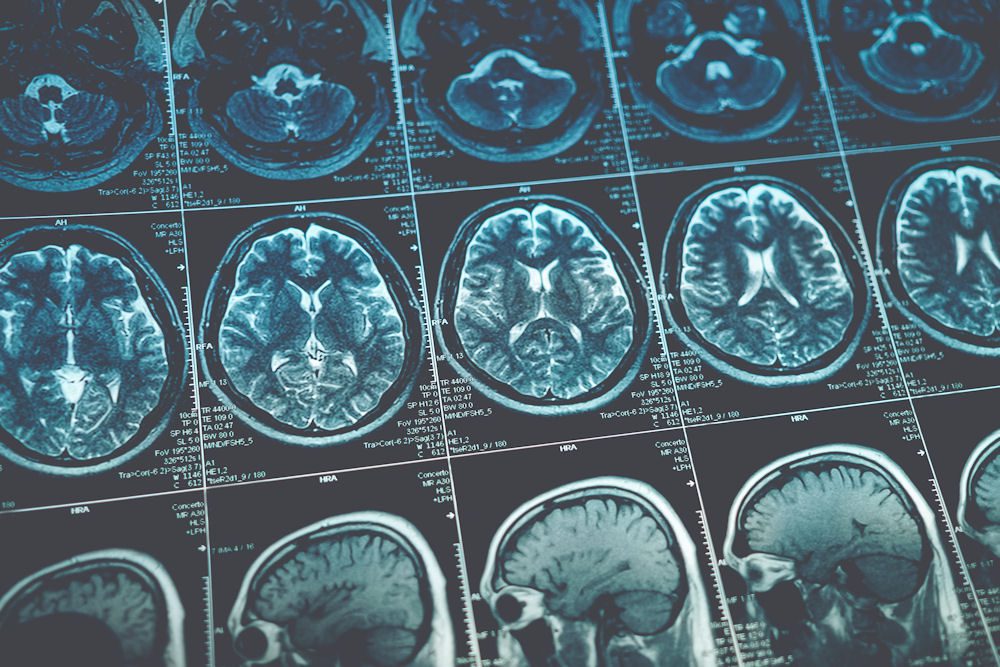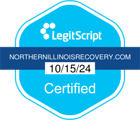When it comes to opioid abuse, it’s difficult to quit, no matter how badly you want to. This is due in large part to withdrawal, especially in drugs like oxycodone. However, while withdrawing from this particular substance can prove to be difficult, it is not impossible. Addiction recovery programs are available to help with withdrawal symptoms. Just how long these programs take to complete depends entirely upon the individual and the severity of their addiction. This then begs the question, how long does oxycodone stay in your system?
At Northern Illinois Recovery Center in Crystal Lake, Illinois, we provide our clients with addiction and mental health treatment in conjunction with addiction therapy services to help them maintain long-term sobriety.
What Is Oxycodone?
Oxycodone is a potent prescription drug and type of opioid prescribed for the relief of moderate to severe pain. It operates by binding to opioid receptors in the brain and spinal cord, thereby altering the perception and response to pain. Due to its strength, oxycodone is generally used in cases where other pain management strategies are insufficient.
However, its powerful effects also come with a risk of dependency and addiction, necessitating careful monitoring and adherence to prescribed dosages. It is available in various formulations, including immediate-release and extended-release forms, to suit different treatment needs.
How Does Oxycodone Affect the Brain and Body?
 Oxycodone is a powerful opioid medication that affects both the brain and the body in multiple ways. In the brain, oxycodone binds to opioid receptors, which are part of the central nervous system. This interaction alters the way the brain perceives pain, providing significant relief to individuals suffering from severe pain. However, the activation of these receptors also releases large amounts of dopamine, a neurotransmitter associated with pleasure and reward; dopamine can lead to feelings of euphoria. This euphoric effect significantly increases the risk of addiction, as the brain begins to crave these pleasurable sensations.
Oxycodone is a powerful opioid medication that affects both the brain and the body in multiple ways. In the brain, oxycodone binds to opioid receptors, which are part of the central nervous system. This interaction alters the way the brain perceives pain, providing significant relief to individuals suffering from severe pain. However, the activation of these receptors also releases large amounts of dopamine, a neurotransmitter associated with pleasure and reward; dopamine can lead to feelings of euphoria. This euphoric effect significantly increases the risk of addiction, as the brain begins to crave these pleasurable sensations.
In terms of its impact on the body, oxycodone can cause a vast range of effects. Commonly, users may experience drowsiness, constipation, and nausea. Long-term use or high dosages can lead to more severe consequences, such as respiratory depression. Respiratory depression causes one’s breathing to become dangerously slow and shallow. This condition is particularly risky, as it can lead to hypoxia, which may result in permanent brain damage or even death. While oxycodone can be an effective pain management tool, it must be used with caution and under strict medical supervision.
What are the Factors That Influence a Drug’s Half-Life?
Half-life is the amount of time it takes for the concentration of the drug in the bloodstream to reduce by half. Several factors can influence a drug’s half-life. One primary factor is the rate of metabolism, with faster metabolism leading to a shorter half-life. Liver function is crucial in this regard, as many drugs are metabolized in the liver. Renal function also plays a significant role; impaired renal function can prolong a drug’s half-life.
Additionally, the drug’s formulation and route of administration, such as oral, intravenous, or transdermal, can impact its half-life. Not only that but clearance and volume also play a role. Other factors, including age, weight, genetics, and the presence of other medications; all significantly alter a drug’s half-life.
The clearance of a drug plays a crucial role in determining its half-life. Clearance refers to the body’s efficiency in eliminating the drug through metabolic processes and excretion. A higher clearance rate means the drug is removed from the body more quickly, resulting in a shorter half-life. Conversely, a lower clearance rate indicates that the drug remains in the body for a longer period.
The volume of distribution reflects how extensively a drug disperses throughout the body’s tissues relative to the plasma. A larger volume of distribution indicates that a drug extensively permeates tissues; this often leads to a longer half-life since the drug leaves the bloodstream slower. Conversely, a smaller volume of distribution suggests that the drug remains primarily within the blood plasma; this results in a shorter half-life due to its faster clearance from the bloodstream.
Factors such as age, body weight, renal and hepatic function, genetic polymorphisms, and concurrent medications all play critical roles in half-life. For example, older patients often experience a prolonged half-life for drugs due to decreased renal and hepatic function. Conversely, individuals with higher body mass may require higher doses to achieve the same effect, altering the way the drug metabolizes.
Some patients may metabolize drugs faster or slower than the average population. Furthermore, concurrent medications can lead to drug-drug interactions that either induce or inhibit metabolic pathways. Understanding these patient-specific variables is crucial to understanding how drugs like oxycodone interact with the body.
What is the Difference Between Opiates and Opioids?
The terms “opiates” and “opioids” are often used interchangeably, but they refer to slightly different substances. Opiates are naturally occurring compounds derived from the opium poppy plant, including drugs like morphine and codeine. On the other hand, opioids are a broader category; they encompass both natural opiates and synthetic or semi-synthetic substances designed to mimic the effects of natural opiates.
Examples of synthetic opioids include fentanyl, oxycodone, and methadone. Both types of substances interact with opioid receptors in the brain to produce pain-relieving and euphoric effects. However, their origins and specific chemical structures can differ.
What are the Causes, Signs, and Diagnosis of Oxycodone Addiction?
 Oxycodone addiction is a complex subject that requires extensive understanding if it is to be combated. It is imperative to know the underlying causes and signs to help someone; it is equally as imperative to understand how oxycodone addiction is diagnosed.
Oxycodone addiction is a complex subject that requires extensive understanding if it is to be combated. It is imperative to know the underlying causes and signs to help someone; it is equally as imperative to understand how oxycodone addiction is diagnosed.
Oxycodone addiction can develop due to various factors. Often prescribed to manage moderate to severe pain, the misuse of oxycodone can lead to dependency. Individuals may start taking higher doses to achieve the same pain-relieving effects or to experience euphoria. Genetic predispositions can also increase the risk of addiction. These include mental health disorders, and environmental factors, including peer pressure and trauma.
Recognizing the signs of oxycodone addiction is crucial for early intervention. Symptoms can include frequent mood swings, increased sensitivity to pain, and changes in sleeping patterns. Physical signs are also prevalent, such as constricted pupils, drowsiness, nausea, and frequent itching. Behavioral changes, including doctor shopping, neglecting responsibilities, and social withdrawal, often indicate a growing dependency on the drug.
The diagnosis of oxycodone addiction typically involves a comprehensive evaluation by a healthcare professional. This includes a detailed medical history, a physical examination, and often, specific questionnaires designed to assess substance use. Blood or urine tests can also be used to detect oxycodone in the system. Early diagnosis is critical in providing timely and appropriate treatment; this has the potential to prevent further health complications and help individuals regain control over their lives.
What is an Opioid Use Disorder?
Opioid Use Disorder (OUD) refers to a problematic pattern of opioid use that causes intentional impairment or distress. This disorder is characterized by an inability to control opioid consumption, craving for opioids, and continued use despite harmful consequences. Opioids include illegal substances like heroin, as well as prescription pain relievers like oxycodone.
Individuals with OUD may develop a tolerance to opioids, requiring higher doses to achieve the same effects. As a result, they may experience withdrawal symptoms if they attempt to reduce or quit using altogether. The disorder can lead to various health complications, affect personal relationships, and hinder daily functioning. These consequences emphasize the necessity of comprehensive treatment approaches to support recovery.
What are the Symptoms of Oxycodone Withdrawal?
There are many symptoms of oxycodone withdrawal, some of which include the following:
- Anxiety and panic attacks
- Muscle aches
- Sweating
- Yawning
- Nausea and vomiting
- Diarrhea
- Insomnia
- Increased heart rate
- High blood pressure
- Cravings for oxycodone
- Irritability or mood swings
How Long Does Oxycodone Stay in Your System?
Oxycodone can remain detectable in various parts of the body for different lengths of time. In urine, oxycodone is typically detectable for up to 3-4 days after the last dose. Blood tests may reveal the presence of the drug for about 24 hours post-consumption. Saliva tests can detect oxycodone for approximately 1-2 days; it can be found in hair follicles for much longer—up to 90 days. The exact duration, however, can vary based on a variety of previously mentioned factors. This includes clearance, volume of distribution, and the overall health of the individual.
Oxycodone Addiction Treatment
Treating oxycodone addiction requires a comprehensive approach that addresses the physical, psychological, and social aspects of dependency. At Northern Illinois Recovery Center, we believe in treating each person on an individualized basis. However, this doesn’t mean that there isn’t a somewhat pre-structured process.
The first step often involves a medically supervised detoxification process to manage withdrawal symptoms safely. Following detox, patients typically engage in a combination of behavioral therapies and counseling; these are imperative for understanding the underlying causes of addiction and developing coping strategies.
Medications such as methadone, buprenorphine, or naltrexone may also be prescribed to help reduce cravings and prevent relapse. Support groups and continued aftercare such as sober living play a crucial role in maintaining long-term sobriety. It provides patients with the ongoing support and accountability they need to stay on the path to recovery.
Recover from Drug Addiction at Northern Illinois Recovery Center
 Oxycodone addiction is difficult to deal with, especially if someone is trying to quit abusing the drug altogether. At Northern Illinois Recovery Center, we can help you overcome your addiction and live a sober, fulfilling life. If you or a loved one would like to find out more, you can contact us here.
Oxycodone addiction is difficult to deal with, especially if someone is trying to quit abusing the drug altogether. At Northern Illinois Recovery Center, we can help you overcome your addiction and live a sober, fulfilling life. If you or a loved one would like to find out more, you can contact us here.




